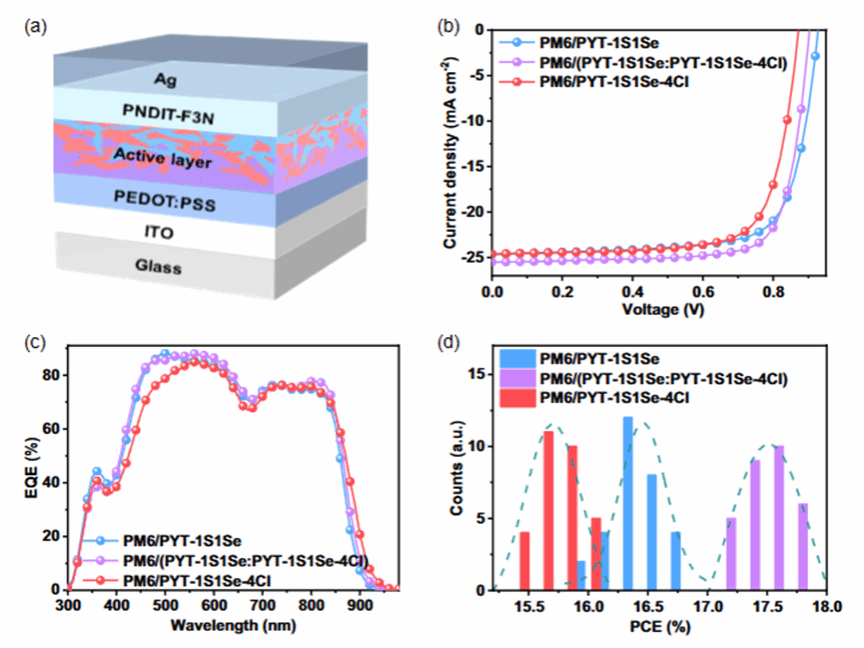Obtaining an admirably modified vertical phase separation of the active layer for all-polymer solar cells (all-PSCs) to facilitate charge generation, charge transfer and transport properties are a prerequisite for achieving high performance. Herein, the active layer of all-PSCs is finely manipulated by combining a ternary blend strategy with a layer-by-layer (LbL) process. Based on the LbL-processed PM6/PYT-1S1Se host binary all-PSCs, a chlorinated polymer acceptor PYT1S1Se-4Cl is designed and introduced into the host system for rationally controlling blend morphology with ordered molecular stacking and suitable vertical distribution. The optimized bulk microstructure of the ternary system is not only beneficial to the charge generation and charge transport properties, but also can significantly reduce the nonradiative energy loss that occurs in the LbL type ternary blend. Thus, the LbL-type PM6/(PYT-1S1Se:PYT-1S1Se-4Cl) ternary all-PSCs exhibit a promising power conversion efficiency (PCE) of 17.74%, which is higher than the corresponding binary systems (PCE = 16.86% for PM6/PYT-1S1Se and PCE = 15.83% for PM6/PYT-1S1Se-4Cl), indicating the special merits of material design and processing technology. Overall, a promising combinatorial method for the morphological regulation of all-polymer systems is demonstrated that contributes to enhanced efficiency.

Figure 1. a) Device architecture of the solar cells. b) Current density versus voltage ( J–V) characteristics for the binary and ternary devices measured under AM 1.5G solar irradiation (100mW cm2). c) EQE curves of the corresponding binary and ternary devices. d) Histograms of the PCE values extracted from the corresponding 30 independently LbL-type binary and ternary all-PSCs.
This work was financially supported by the National Natural Science Foundation of China (NSFC) (grant nos. 52061135206 and 22279094) and the Fundamental Research Funds for the Central Universities. Y.L. and S.P. thank the Russian Science Foundation for financial support (grant 21-43-00051). GIWAXS data were acquired at the Shanghai Synchrotron Radiation Facility, supported by beamline BL14B1. We thank Dr. Ying Zhang from the Core Facility of Wuhan University for the TOF-SIMS measurement. The grant number for the funding from the Russian Science Foundation has been updated on 7 June 2023, after initial online publication of the Version of Record.
Original link: https://doi.org/10.1002/solr.202300064

